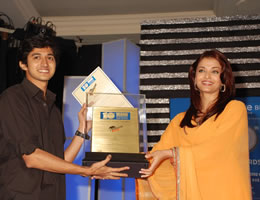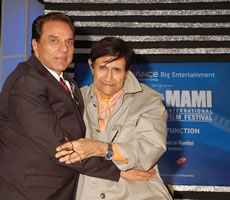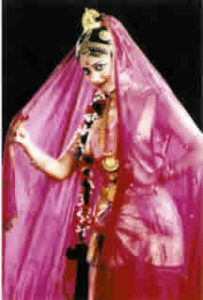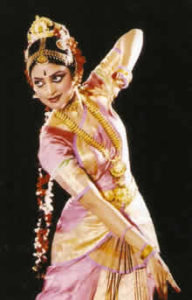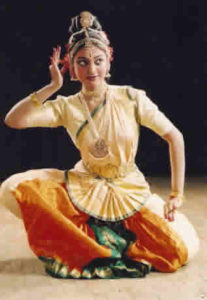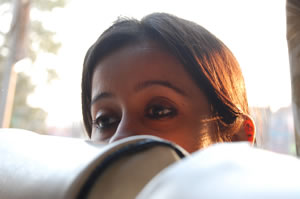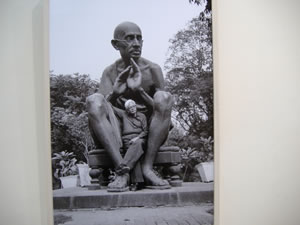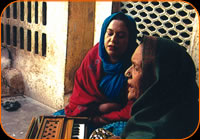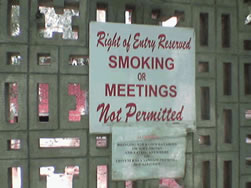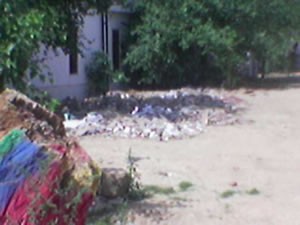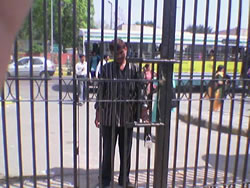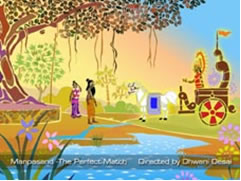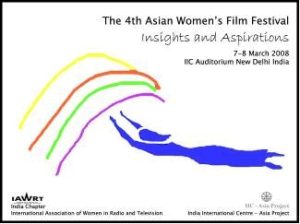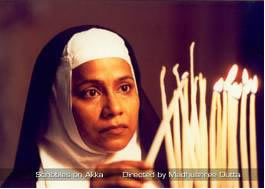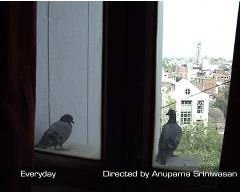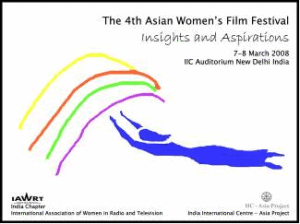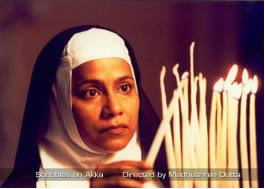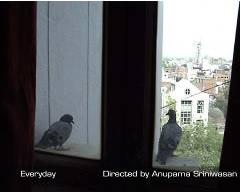I admit to being embarrassed about making a presentation about how I make films. I feared it would be a pompous thing somehow and that my body of work is not substantial enough (which it’s not) to talk about. But as I began to think about it, I realized in some ways it was an opportunity to valued, if one could speak with both an honesty and seriousness about intent.
The reason I value it more is because it’s very difficult to be a documentary filmmaker. Not because of money, because of lack of sufficient exhibition and distribution structures – these problems will remain because we will always want more money and more audiences. The nature of any work which is independent and not part of the mainstream makes those things a given. But the reason I think it is difficult is because there is so little discussion around us about documentary films – and even less about it as a film, not only a political statement (although in essence the two are not different).
Sometimes people ask me what I do. When I say I am a filmmaker I see their eyes lighting up and when I add that I make documentaries I see the light go out, their voices peter out into a “oh accha, I see.” If someone asks me what I have been doing recently and I say, well I just finished a film, their voices go up in delight – oh? You made a film?! And I add, yes, it’s about this incident in Meerut that.. and they say, deflated, oh, you made a new documentary, I thought you’d made a film.
The fact is, no one really takes documentary films seriously as filmmaking – sometimes not even filmmakers themselves. No one writes about it in the film reviews column in the press. Academics and critics develop increasingly sophisticated ways of talking about mainstream culture but a language and framework to assess the contemporary alternative culture seems not to coalesce. And in the absence of that language it becomes hard to clarify one’s own craft and thinking, for it to grow stronger.
Even as we stand at a moment that has seen a real surge in the popularity of the documentary film, it appears that documentaries are still invisible even to those who watch them – as films.
As any documentary filmmaker, I could not but be conscious of the marginality of the form. As one who began work in the mid-90s, just as the media landscape was undergoing a seismic shift, I was all the more keenly aware that the relationship with the language and the style of this form was a sporadic one. I lay all this out because I think, what I have come to realize on reflection is that a large part of my goal in a film is to make people think about filmmaking as a language and to talk about it.
Why do I want to do this – besides reasons of vanity of which there’s always some part in any artist’s repertoire?
I am not very sure if younger people today feel what I felt when I was young. I wanted to make documentary films at a time when there were far fewer filmmakers around than today. Of those, the ones who didn’t have beards, wore far more serious clothes than I did (or do now that I am no longer young). Although this sounds a bit facetious I say it only to indicate that in some senses a lot of the filmmakers working then came from a largely common (despite disagreement and dissmiliarites) political and filmic tradition.
To quote from an interview with the well known feminist documentarian Deepa Dhanraj which appeared in Deep Focus, although I read it years later, anthologized elsewhere:
“We saw films as a way of documenting and expressing a certain thinking. We also saw the making and viewing of films as an emotional experience for other women. Why we chose films specifically as the medium as opposed to the theatre, we really were not clear about. We were unhappy with the films around us and we did feel the need to reach out and generate images that never existed and could counter the negative portrayals and manipulations of women in the media. India having such a strong audience tradition, films seemed to be a good medium to enable us to go into community and draw people together. That we were not going to screen these films to a neutral audience was very clear, so our audience was fixed. The whole process was an alliance with the people who helped us to make the film. So both in production and conception, the themes and concerns of these films originated with the activists of that area.”
Therefore, there seemed to be an implicit understanding which indicated what was political and what wasn’t – for the filmmaker and the viewer. In the context of that commonality – it is hard to describe how uncertain and how ill-equipped I felt to make films. I felt like a pretender and I found it very hard to show my ignorance because it usually aroused shock. People were shocked that I didn’t know everything about the Narmada Bachao Andolan, the Naxal movement or the Mathura rape case. I felt an instinctive relationship with the political impulse and ideas in all the documentaries I watched – from Bombay our City to Something Like a War. But because they were ideas I couldn’t see clearly articulate – in terms of an easily accessible historical record – I felt very nervous because I didn’t know any of this for certain although I in my heart felt that I knew it for sure.
What resulted from this was something I can only call a hectic political anxiety.
I was a middle class kid who had gone to a couple of rallies and felt supportive of many leftist positions. I remember being excited when I went to the first big NBA rally in Bombay – but I hadn’t as such been a part of an organization and I didn’t really want to be – I wanted to be a filmmaker. However, I constantly felt that that would not be political enough. If I wanted to be really political I could do it only if I were somehow attached to a movement of some kind and if my film were somehow interlinked with these issues. And yet….Why did this not convince me? Was I scared of my own ignorance? Was I too entrenched in my middle class identity to want to abandon it? I am sure these things played some part but the fact is there was actually not enough discussion happening around documentary film making having a political space of its own, as art, and there wasn’t really much of a space to talk about all this and so, come to some understanding from which I could move on. I felt political – but how to express this politics? Would I have to become a naxalite? Or work in the Naramada valley? But I didn’t think I could, I didn’t even think I should. Was it as simple a matter as voting? Obviously not. What is it then that films want us to do – and by extension, should I ever get to make films- what was I supposed to tell people to do?
What was important for me to understand was that I actually was in a different time and space than a lot of earlier filmmakers – that I wasn’t actually operating in the same context and that some of my confusion about their responses was in itself a critique from which some new understanding was born for me about the kind of films I would eventually make.
In fact, later in the same interview quoted above Dhanraj says:
“In India, what has also happened is that we have got stuck with the form of socialist realism without the environment of revolution which bred this form in the first place…(as in say Chile, or the USSR)…Many film forms created (in those contexts) have become radical genres which ‘political’ filmmakers have used and are still using in toto. Here in India, the prevailing ideological climate is reactionary and we seem to have got stuck with these forms without the specific historical circumstances that bred them in the first place. Today, by and large, these films only illustrate the individual filmmaker’s politics and don’t move into the realm of political activity.” (Italics mine)
What does that mean – to move into the realm of political activity. This kind of discussion about filmmaking is important because it asks us to think about two things: the nature of politics and the nature of film as a medium of political activity. Do we make films that faithfully illustrate our political position on a particular matter? Or do we use our political position to arrive at an understanding of the subject and try somehow to bridge the gap between what we see when we look at something thanks to our political perspective?
As I see it, with the political shifts of the 90s a lot of filmmaking was not necessarily happening within the context of particular movements. And as, in the last decade and a half, the urban and semi urban middle class has prospered and expanded hugely it has increasingly gone away from a lot of progressive political thought and in fact information which might cast a questioning light on their choices and their realities. For me in many senses it is imperative to draw this community back into the fold of a larger political discussion and I am going to speak very briefly about how the nature of intervention in my work is tied to my formal choices.
I was lucky that I saw the work of a few filmmakers that I think was also responsive to this pool of ideas – Jill Misquitta, Reena Mohan, Madhusree Dutta – strangely they were all women – which helped me in thinking about these things a lot, however associatively.
Then I was very lucky because I was asked to make a film about feminism – not an event etc. but a film about a political idea that would encourage people to engage with this political idea. So this was important to me because in fact I was struggling with these two questions myself and I had to find a strategy to deal with it.
While researching this film I found again and again the normal human contradictoriness in many ways – the way people acted and the ideas they had for instance did not always match. There’d be lots of people whose ideas I agreed with who would not behave well or be very rigid – i.e., not in accordance with the values they (we) espoused, whereas frequently, people whose ideologies were anathema to me were the soul of human reasonableness and courtesy. I wanted, in the film, to try to communicate a sense impression of what I understood in the research process and I think a lot of the language I have since been using, evolved in the process of making this film.
I wanted to find a way to include the idea that I might both agree and disagree with something. So for instance in interviews, I decided not to ask about all the things someone notable had achieved, not to glorify, but, although I did not know them personally, to find a way to have a personal conversation while talking of political things.
One of the things I decided to do (and have done ever since) is not choose people who were in the film on the strength of their achievements but how the conversation with them answered my personal questions about some of the ideas (in this case feminism and the feminist movement). Also I think I tended again and again to choose people who inhabited a sort of middle space, or at least were willing to talk about the middle space. I basically began to be very interested in that which was not quite being discussed in public space – the interior, the quotidian, the emotional.
(CLIP OF VINA MAZUMDAR’S INTERVIEW WHERE SHE TALKS ABOUT HER PERSONAL SENSE OF INADEQUACY IN THE FEMINIST WORK SHE DID AND YET, SHARES A CERTAIN WISE, REFLECTIVE UNDERSTANDING ABOUT THE NATURE OF MOVEMENTS).
I think what’s important to me – is that within the narrative of a film, absolute positions not be taken vis-à-vis a person or event. However, clearly my position on the matter is clear and should be communicated somehow. This is the basic idea along which I structure my films: that my politics is clear in the way I choose things but I often talk to those (to use a lovely word I’ve learned from academic friends) who inhabit a liminal space – or at least look for that sort of space within the conversation.
A curiosity I had about why films also proceeded along certified political lines – was that they would become so repetitive. I came to understand that one of these reasons was that both politically and formal-ly, we know that we are marginal in some way and that the ideas we are working with are not in the realm of common knowledge, or even a common value system. Hence, an anxiety about stating and arguing our position in a peculiar mixture of indignation and dutiful proof emerged. In all of this film as a medium gets engaged with for its amplificatory properties, more than its performative ones.
But so much of art is a trick of performance. So, I decided rather consciously, that in a film, what if we assume not what is right or wrong – but we assume what matters and doesn’t. We assume that our position does not have to be explained – either by proving someone wrong or by explaining why we are right. But what if we just assume it’s fine to have the position we have and maybe make a little effort to present it clearly enough and not explain it.
To do that we need to rely on the nature of film as primarily a space of ambiguity where ideas may be clarified through constant presentation/examination.
In some ways I am particularly uninterested in the concept of expose, the concept of the sting for instance so I tend not to interview too many of the “accused” in the progressive framework. Because the truth is audiences don’t share my values although those values may overlap. And if they shared those values then I wouldn’t feel the need to show them a film. Furthermore I do feel that if the instruments of justice really worked in our society then the expose would serve a genuine purpose, which, following a natural path would lead to justice. But in the context of a rather cynical system and a disenchanted public, the language of the expose seems to reaffirm violence/injustice.
So I’ve become very interested in the idea of conversation – with all its attendant charms, points of convergence and divergence, as a means of changing ideas and for that I felt it was necessary to create spaces within the film where strong lines were not constantly being drawn. What are we really making these films for – to help people make more informed, more democratic decisions? Perhaps, I felt, a way to do this would be to allow them to inhabit a space for some time that would be a space of no absolute truth, no certitude and perhaps, take that sense away with them.
So I tend to use what I call a multiple window – which is not about providing different perspectives as much as a sort of more mischievous behaviour of jumping in from one window and then jumping out and then coming in from the door and just playing the fool a little bit.
I also tend to inhabit a persona and I try to keep it consistent – that is I see myself as an actor in the film and I make the film with that exact state of mind and way of asking questions – diff. for diff films.
This gives the films a sort of clear landscape for the viewer to inhabit, creating a sort of sensual journey of possibilities.
(CLIP OF BILQUIS’ INTERVIEW IN Q2P)
The biggest issue has been what to do with things you really don’t like? Do you not include it? I felt there was no need to waste a lot of time with stereotypes or those who propagate ‘regressive thinking’ because a film can’t degnerate into a tu-tu-main main. I am uncomfortable with the black and white position – not so much because there is no right and wrong – actually I think there is, but the language of right and wrong is too polarizing. What do you do with stereotypical situations of which you are critical then?
I’ve tended to use fictional ideas for this. In Where’s Sandra? I used tongue-in-cheek song picturisations that typified the gaze with which people see the Catholic girl (the figure of whom the film was about). In Unlimited Girls I used fake advertisements for anti-feminist products to typify the prejudices about feminism. In Morality TV aur Loving Jehad: Ek Manohar Kahani I used a fake article written in the style of pulp fiction as a commentary (the film was about the language of tabloid news).
(CLIP FROM WHERE’S SANDRA – OF A SONG. ALSO, EARLIER, MORALITY TV HAD ALREADY BEEN SCREENED)
To do this, freely, but with the firm sense of making a political intervention I think I’ve had to trust that this is how I believe films work. Of course this is not absolute, it changes from time to time but we no longer look at films as absolute evidence. It’s important to acknowledge that. Offering pleasure, knowing that film is a medium of pleasure and that is what draws people in but now allowing it to lull them, rather to wake them up to make them excited (not always pleasurably, but certainly in part through their senses) is a chance I feel all film-makers do take.
And in that sense I also see my work as a conversation with other filmmakers – I believe in knowing what they do and not doing the same thing. I am confident that this works as a composite movement and what one comrade in this endeavour is doing – is being taken care of – and that I need to not replicate it as an indication of solidarity, but I need to know about as much as I can and learn from other films and complement them.
It’s obvious I have an interest in the way something is said and not exactly the thing itself although these two things are intimately connected. One of the things I am often accused of is leaving some things not quite said. I have to say it’s deliberate – I think if you try to connect to the logic of the filmmaking aesthetics (not only factuality) in a film the audience will get it in their heads and will need to talk about it as a way of expressing what they’ve sensed – because they will know it for sure, but not for certain. And in getting there, in conversation with the film and each other, they may get to other places. And I really and truly in my heart know both for sure and for certain that in this way (along with many others), a little bit, the world can slowly embrace change.
